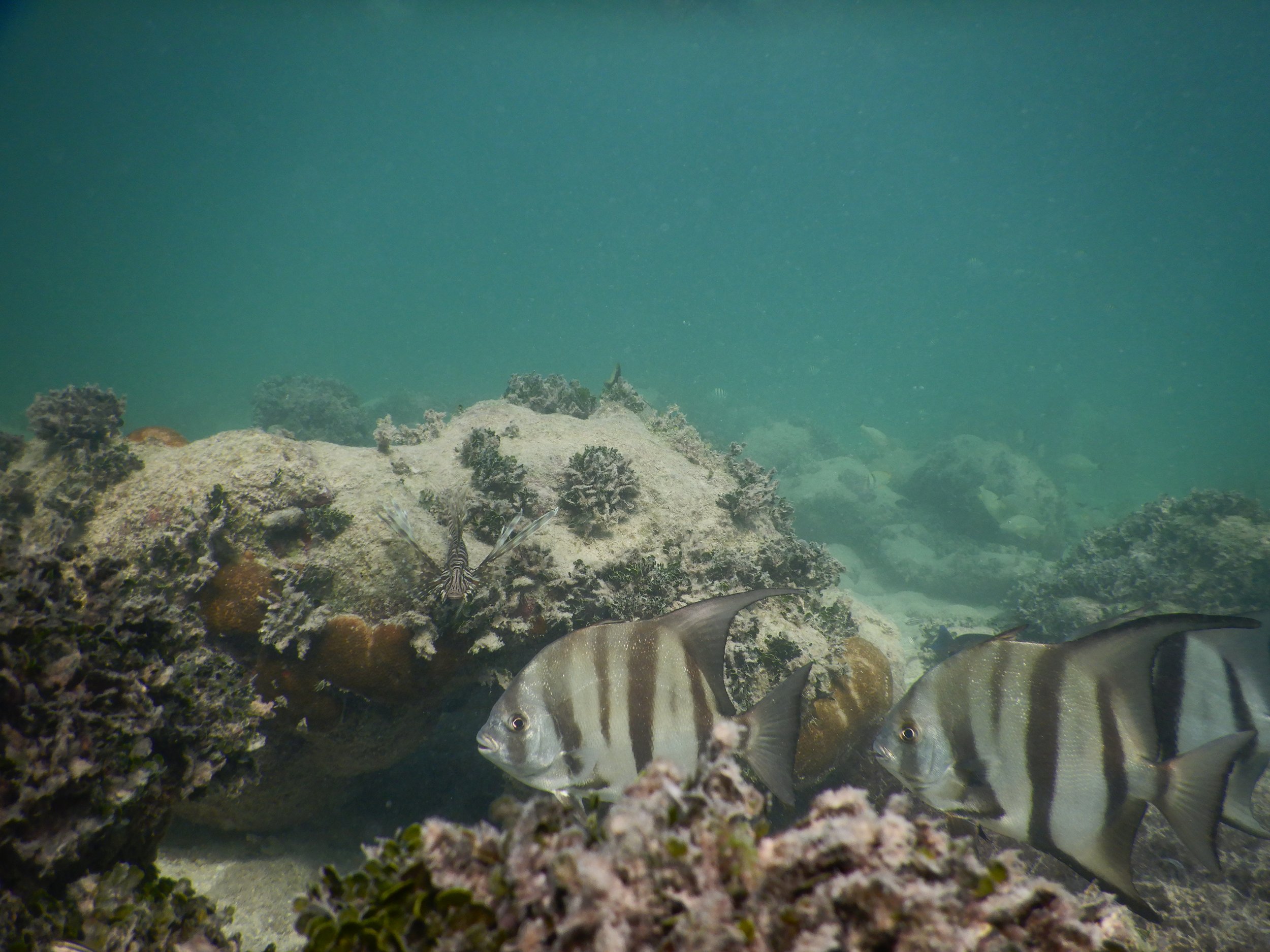What A Site!
By Pat Malloy
Hey everyone! It's Pat from MarineLab, and I’m back to talk about why MarineLab’s snorkel sites are special. The instructors at MarineLab have put a lot of time and effort into finding the best snorkel sites possible; that means we’ve pretty much explored every inch of the waters near our campus in Key Largo. The Florida Keys are home to some beautiful and amazing ecosystems, so we are always eager to take our visiting students out to snorkel and explore them.
We love bringing students to explore the beautiful waters around MarineLab
The best mangrove snorkel spots have the prop and drop roots of the red mangroves overhanging into the water. This allows the students to literally snorkel under the branches and roots and get up close and personal with the habitat. It’s also where all the cool fish and invertebrates like sea stars are hiding! One of the staff’s favorite spots in the mangroves is called Spring Fever, which was named by our Senior Vice President Sarah because of all the tulip snails that are known to be found at this location.
The roots of the red mangrove trees often have sponges, algae, and invertebrates living on them!
One of the highlights for students coming to MarineLab is getting to snorkel at our beautiful coral reefs! The Florida Keys are home to the 3rd longest reef track in the world, so we have plenty of amazing sites to choose from. We love to take our students to reefs that are considered SPA zones (Sanctuary Preservation Areas). That means there is absolutely no touching, fishing, or taking anything at these reef spots. Coral reefs cover less than 1% of our oceans, so it’s important to do our best to protect what few are left!
Students can get a close look at our coral habitats at our snorkeling sites!
Another interesting location is what we call hardbottom. It's a unique location close to shore where you have mostly shallow flat seafloor, and a few decent size coral heads mixed in! The reason you only see a few corals and not a whole reef is because the water conditions close to shore are not ideal for coral growth. But, because everything around these hardbottom areas is so flat, fish, rays, and sharks gather around these small structured areas as they provide shelter and protection!
Hardbottom is one of the most unique snorkel sites we offer at MarineLab. If you look closely, you can sometimes see lionfish hanging out with the coral!
One of my favorite snorkel locations is an island called Rodriguez Key! It’s considered an ecotone, which is a transition period between two ecosystems; in this case, it’s the seagrass, mangroves, and coral reefs. The best part is we get to collect a really cool algae called Neogoniolithon strictum, or Gonio for short, and do a hands-on lab where we break it apart on the boat. We always find cool, unique critters, like brittle stars, mantis shrimp, and even baby octopuses sometimes!
These lucky summer campers got to see a baby octopus during their lab
A full-day adventure we do with advanced high school or college groups is called Keys Survey, where we try to take our students to as many habitats as we can in a single boat trip. We’ll start inshore with the mangroves and seagrasses, then go to the hardbottom, a patch reef, a bank reef, and hopefully end with a visit to one of the many shipwrecks in the area. It is a very long but rewarding day on the water!
Every day at MarineLab is a little bit different because the weather is constantly changing. Because of this, we have upwards of 30 different snorkel sites we can choose from. We can snorkel anywhere from the Florida Bay and the Everglades, to the crystal clear waters at the reefs in the Atlantic Ocean. We often set out with a Plan A, B, and C, so no matter what happens or how windy it is, we always have an awesome place to take our students snorkeling!





